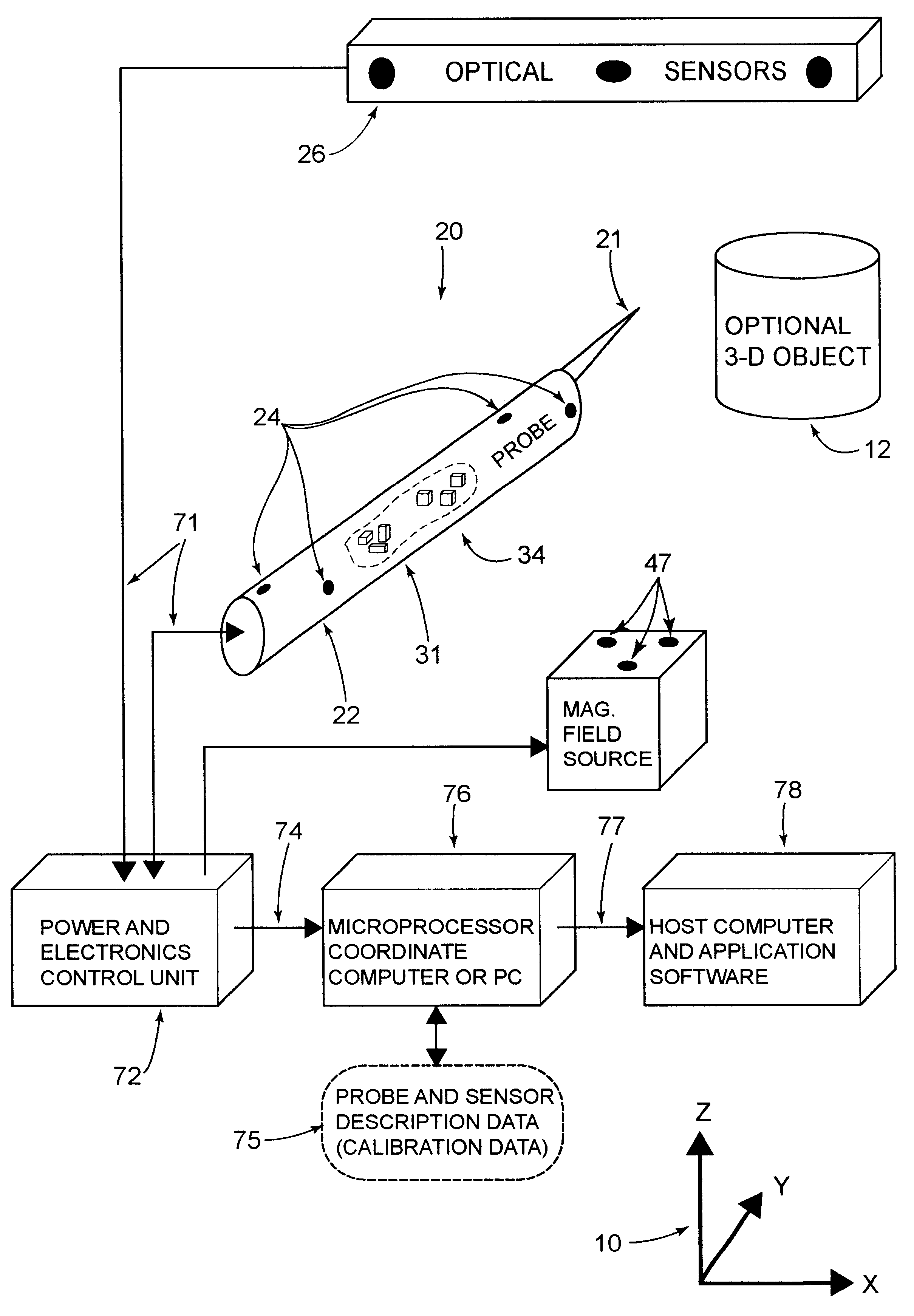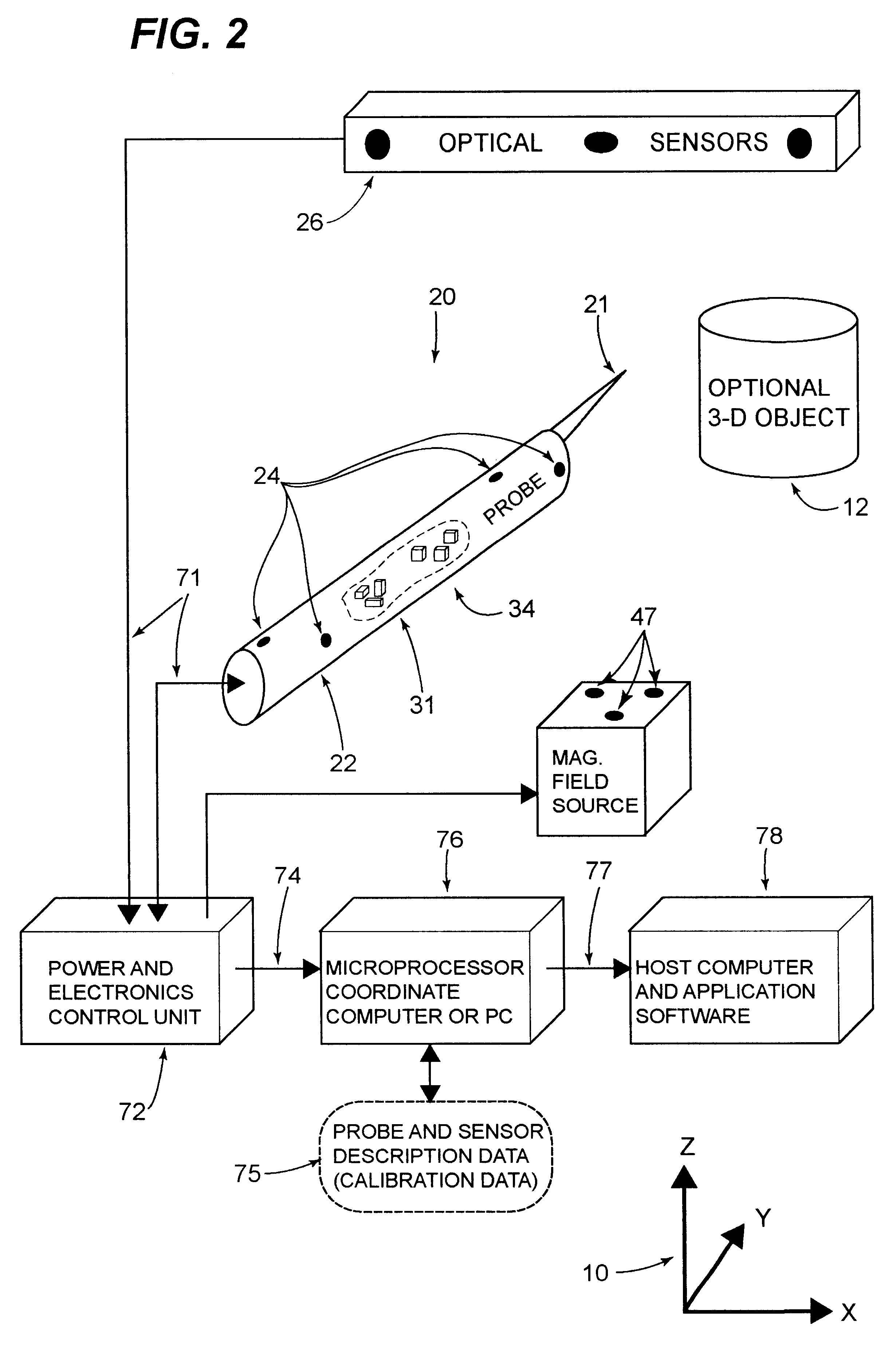Hybrid 3-D probe tracked by multiple sensors
a technology of multiple sensors and hybrid probes, applied in the field of hybrid 3d probes tracked by multiple sensors, can solve the problems of all such systems, limited accuracy and ease of operation, and inability to maintain line-of-sight,
- Summary
- Abstract
- Description
- Claims
- Application Information
AI Technical Summary
Problems solved by technology
Method used
Image
Examples
Embodiment Construction
The invention will be described below with reference to the figures and the numbered individual components therein. In the description below, the specific construction, the number, and the arrangement of the components are intended for clarity of illustration and are not limitations on the scope of this invention. Other arrangements or quantities of the components constitute alternative specific embodiments of the same method, apparatus and system.
FIGS. 1 and 2 illustrate two alternative preferred embodiments of the present invention. FIG. 3 depicts as a flowchart the major steps 81 . . . 99 of the program that operates the coordinate computer 78 and other peripheral equipment. These program steps apply to either or both of the two embodiments and even to an embodiment that combines the components of those two.
With reference to FIG. 1, the apparatus includes a 3-D light based measurement system, such as the FlashPoint 5000 built by Image Guided Technologies, Inc., of Boulder, Colo. ...
PUM
 Login to View More
Login to View More Abstract
Description
Claims
Application Information
 Login to View More
Login to View More - R&D
- Intellectual Property
- Life Sciences
- Materials
- Tech Scout
- Unparalleled Data Quality
- Higher Quality Content
- 60% Fewer Hallucinations
Browse by: Latest US Patents, China's latest patents, Technical Efficacy Thesaurus, Application Domain, Technology Topic, Popular Technical Reports.
© 2025 PatSnap. All rights reserved.Legal|Privacy policy|Modern Slavery Act Transparency Statement|Sitemap|About US| Contact US: help@patsnap.com



